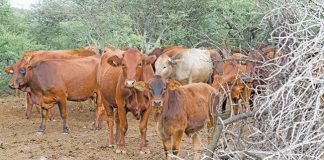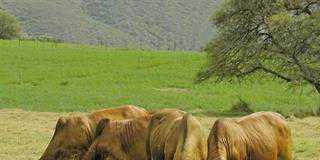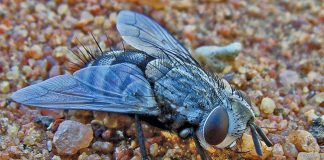
Photo: FW Archive
Knowing the phase that your farm, camps or sections of camps are in will help you understand the general condition of the veld, its grazing capacity and its realistic stocking rate. It will also help you to plan management strategies for each section.
The three grassveld stages
The main phases of succession are the pioneer, subclimax and climax stages, with environmental stability increasing towards the climax stage, and vice versa.
When veld reaches the pioneer stage, you might have to implement special measures to kick-start it into the next stage.
READ Implementing a holistic grazing management plan
The pioneer stage is found on bare and disturbed soils; such areas have low grazing capacity. As the condition of the soil improves with time, the plant cover increases and the pioneer species give way to species better adapted to the improved conditions.
As this happens, grazing quality improves. The climax stage has the highest production capacity of all the stages.
However, it is not necessarily the best stage for grazing, and you might have to use good veld management techniques, such as judicious burning, to maintain the vegetation in the optimal grazing condition.
Progressive succession leads to veld improvement while retrogressive succession leads to veld deterioration. Retrogressive succession can result from overgrazing.
Certain plant species are characteristic of the different stages of succession and can therefore be used as indicators of veld condition.
For example, in summer rainfall areas, brown stick grass (Aristida adscensionis) is a pioneer grass species, heart seed grass (Eragrostis superba) is a subclimax grass species, and rooigras (Themeda triandra) is a climax grass species.
The Karoo also has a list of dwarf shrubs that fall into the different succession stages.
Get to know the various indicator plant species so that you can detect changes in veld condition. If necessary, you can then correct these changes.
Veld Condition
Veld condition, as determined from species composition, is used to estimate the grazing capacity of a farm or even a camp.
Grazing capacity is the potential of the veld
to support livestock and is expressed as the number of cattle, sheep or goats that can be supported by the veld without the grass deteriorating due to over-utilisation or under-utilisation.
Grazing capacity should be seen as a balance between plant production and animal production.
The condition of a piece of veld depends on the management practices applied, for example conservative or moderate stocking rates. The aim should be maintain veld condition at an optimal level.
The first step to drawing up a veld management programme is to assess the veld condition in each camp or group of camps. You want there to be enough palatable plants for your animals to graze and convert into meat or fibre.
Keep in mind, though, that the various grass species differ from each other in their grazing value. The species that occur in a particular section of veld will indicate overgrazing or under grazing.
Veld dominated by unpalatable species points to overgrazing. In addition to establishing in which succession stage the veld is in, you need to know which decreaser and increaser species occur in the various camps.
A decreaser is a grass species that is dominant in good, well-managed veld, but which decreases when veld is mismanaged.
An increaser is a grass species that occurs naturally in veld, but increases when veld is overgrazed. Invaders are plant species that don’t occur naturally in the area.
Estimating grazing capacity
The grazing capacity of an area of land is expressed in the number of mature livestock units (MLUs) per hectare, or the number of hectares per large unit.
The grazing capacity can therefore be used to determine the numbers of different animals that can be run on a farm.
An MLU is the equivalent of a bovine of 450kg whose weight increases by 50g/ day on grassland with a good energy digestibility. This can easily be converted to small-stock units (SSUs) by taking the average weight of each type of animal.
Ten lambs weighing 45kg apiece would therefore be equal to one MLU. A farm that can carry, say, 100 MLUs would be able to carry 1 000 sheep or goats weighing 45kg each.
However, this would depend on the area, the condition of the veld and the management system employed.
Generally, the higher an area’s rainfall, the better its grazing capacity.
On planted pastures, the grazing capacity is usually expressed as MLU/ha.
On natural veld, it is mostly expressed as ha/MLU, based on agriculture department recommendations for a particular district.
So, for example, a grazing capacity of 15ha/MLU means that the veld can carry 1 MLU on every 15ha. Thus, a 2 000ha farm would be able to carry about 130 MLUs.
In an area with a carrying capacity of 10ha/MLU, a 2 000ha farm could be able to carry 200 MLUs, or the equivalent numbers of SSUs.
The departmental recommendations are only guidelines, as your farm might be able to carry more or fewer animals than the norm. This can be ascertained from expert advice.












